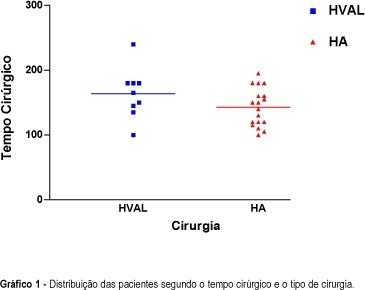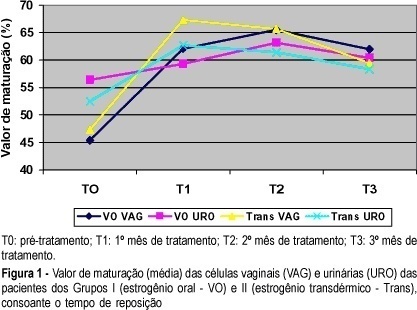Summary
Revista Brasileira de Ginecologia e Obstetrícia. 2003;25(8):571-576
DOI 10.1590/S0100-72032003000800005
PURPOSE: to estimate the prevalence of the hepatitis B surface antigen (HBsAg) in parturients admitted to the "Instituto Materno-Infantil de Pernambuco (IMIP)", Recife-PE, and to determine the serologic profile of the positive ones. METHODS: this is a prospective cross-sectional study where the VIDAS and VIDAS HBs systems were used for detection and confirmation of HBsAg, respectively. The parturients were randomly selected. In HBsAg+ patients, the other serologic markers were tested by the use of the AxSYM automated system. The newborn babies of HBsAg+ mothers were vaccinated with the Engerix B vaccine. RESULTS: among 1584 parturients, there were 9 (0.6%) HBsAg positive. None of them had anti-HBc IgM, thus they were all prevalent cases. In 1/9 (11.1%) of the HBsAg+ mothers, HBeAg was isolated and in 4/9 (44.4%), this antigen circulated along with its antibody, hence the importance of establishing the different magnitudes of risk of vertical transmission. Except for two newborn babies from a twin pregnancy (one with low birth weight), all presented seroconversion to anti-HBs with 3 doses of the vaccine. The premature twin babies showed seroconvertion only after the fourth dose of the vaccine. CONCLUSIONS: the prevalence of hepatitis B among parturients at IMIP is relatively low and all patients diagnosed had the chronic form of the infection.
Summary
Revista Brasileira de Ginecologia e Obstetrícia. 2005;27(10):571-574
Summary
Revista Brasileira de Ginecologia e Obstetrícia. 2006;28(10):571-574
Summary
Revista Brasileira de Ginecologia e Obstetrícia. 2015;37(12):571-577
DOI 10.1590/S0100-720320150005419
To evaluate the nutritional and psychological factors associated with the occurrence of the practice of pica in pregnant women attending a public hospital in Rio de Janeiro, Brazil.
The study was based on a descriptive design with exploratory features, and conducted on 13 adult and adolescent pregnant women aged 16 to 40 years with a diagnosis of pica in the current pregnancy. Pica was diagnosed by a nutritionist in a standardized interview situation, when questions about the occurrence and frequency of pica, and types of substance ingestion were investigated. After signing the Informed Consent Form (ICF), all participants were evaluated by a nutritionist and seven of them were submitted to psychological assessment with standardized instruments to evaluate stress and anxiety, and to assess coping strategies.
The type of pica most frequently reported was pagophagia (30.8%) and the consumption of fruit with salt (30.8%). The most prevalent coping strategies were "religious practice-focused" and "seeking social support", both presented by 42% of the pregnant women. We observed the occurrence of some degree of stress and anxiety in all pregnant women, as well as comorbidities (69.2%) and gastrointestinal symptoms (84.6%).
Considering that pica may be associated with increased perinatal risk, it is very important to investigate this disorder during prenatal care, and to dopt obstetric, psychological and nutritional preventive practices to reduce the complications for mother and fetus.
Summary
Revista Brasileira de Ginecologia e Obstetrícia. 2002;24(9):571-571
Summary
Revista Brasileira de Ginecologia e Obstetrícia. 1998;20(10):571-576
DOI 10.1590/S0100-72031998001000005
Purpose: to evaluate the advantages of the laparoscopic approach for conversion of abdominal hysterectomies in vaginal hysterectomies in patients with indication of concomitant adnexectomy, being considered the safety and the additional costs of the procedure. Patients and Methods: cases: 9 patients submitted to Laparoscopically Assisted Vaginal Hysterectomy (LAVH) associated with adnexectomy. Controls:18 patients submitted to Abdominal Hysterectomy (AH) associated with adnexectomy. Both groups were compared regarding preoperative characteristics and the results of the procedure. The patients submitted to LAVH and AH are similar concerning age, parity, cesarean deliveries, previous surgeries and body mass index. Results: the average surgery time was 163.9 minutes for patients submitted to LAVH and 142.8 minutes for patients submitted to AH. No patient in the LAVH group presented postoperative complications, while in the AH group 2 patients presented suture deiscence and there was 1 case of incisional hernia. The median of hospital stay was 1 day in the LAVH group and 2 days in the AH group, those of convalescence periods were 2 and 4 weeks, respectively. 55.6% of the patients in the LAVH group and 100% in the AH group needed analgesics in the postoperative period. Conclusions: LAVH was shown to be advantageous in relation to AH in terms of better recovery and lower incidence of complications in the postoperative period. The procedure is feasible and safe in a University Hospital, and without additional costs.

Summary
Revista Brasileira de Ginecologia e Obstetrícia. 2010;32(12):573-578
DOI 10.1590/S0100-72032010001200002
PURPOSE: to establish reference values for the length and area of the fetal corpus callosum between the 20th and 33rd weeks of gestation using three-dimensional ultrasound (3DUS). METHODS: this cross-sectional study involved 70 normal pregnancies with gestational age between 20 and 33 weeks. An Accuvix XQ instrument with a convex volumetric transducer (3 to 5 MHz) was used. To assess the corpus callosum, a transfrontal plane was obtained using the metopic suture as an acoustic window. Length was obtained by measuring the distance between the proximal and distal extremities of the corpus callosum. Area was obtained by manual tracing of the external corpus callosum surface. The means, medians, standard deviations, and maximum and minimum values were calculated for the corpus callosum length and area. Scatter graphs were created to analyze the correlation between corpus callosum length and area and gestational age and biparietal diameter, the quality adjustments was verified according to the determination coefficient (R²). The intraclass correlation coefficient (ICC) was used to assess the intraobserver variability. RESULTS: mean corpus callosum length increased from 21.7 (18.6 - 25.2 mm) to 38.7 mm (32.6 - 43.3 mm) between 20 and 33 weeks of pregnancy, respectively. Mean corpus callosum area increased from 55.2 (41.0 - 80.0 mm²) to 142.2 mm² (114.0 - 160.0 mm²), between 20 to 33 weeks of pregnancy, respectively. There was a strong correlation between corpus callosum length and area and gestational age (R² = 0.7 and 0.7, respectively) and biparietal diameter (R² = 0.7 and 0.6, respectively). Intraobserver variability was appropriate, with an ICC of 0.9 and 0.9 for length and area, respectively. CONCLUSIONS: reference values for corpus callosum length and area were established for fetuses between 20 and 33 weeks gestation. Intraobserver variability was appropriate.
Summary
Revista Brasileira de Ginecologia e Obstetrícia. 2002;24(9):573-577
DOI 10.1590/S0100-72032002000900002
Objective: to study the effects of oral or transdermal estrogen replacement on the lower urinary tract and vagina in postmenopausal women. Methods: we studied 25 postmenopausal women evaluating the oral or transdermic estrogen replacement effects on the vaginal cells and urinary sediment during 3 months. The patients were randomly distributed into 2 groups: Group I, n = 14, treated orally with 0.625 mg equine conjugated estrogen plus 5 mg medroxyprogesterone acetate, daily for 3 months; Group II, n = 11, treated transdermally with 50 mug 17-ß-estradiol, once a week, plus 5 mg medroxyprogesterone. Daily, for 3 months, urinary samples were collected from the first miction in the morning after urogenital antisepsis into sterile tubes. The sample was centrifuged and the sediment was smeared. Vaginal and urinary smears were then fixed in absoluted alcohol and stained by the method of Shorr. Results: the patients who used the oral route presented maturation of the vaginal cells (from 45.4 to 65.5% after 2 months of treatment, maintaing 62% afterwards) but this did not occur with urinary cells (56.4 before treatment versus 60.4% at the end of the period). The transdermal route promoted maturation of vaginal and urinary cells. Conclusion: we have concluded that transdermal estrogens have satisfactory effects both on vaginal and urethral sites. However, with the oral route we did not find the expected results in the urinary tract in all cases.
